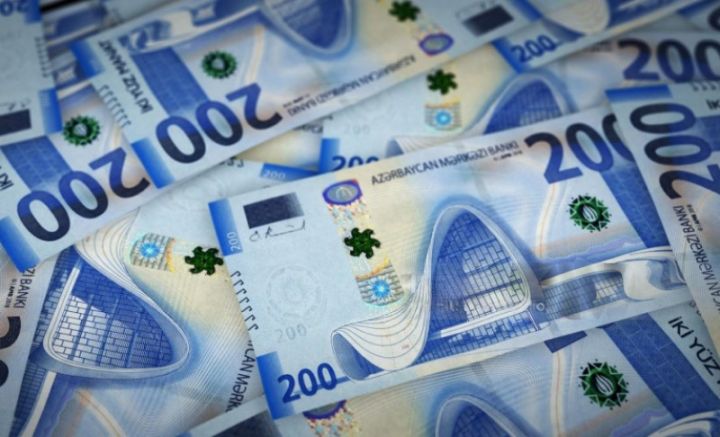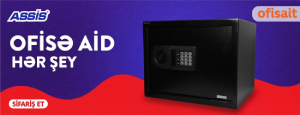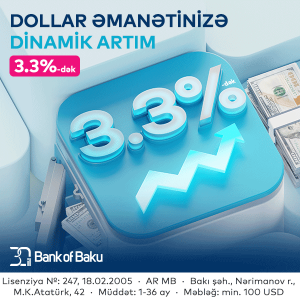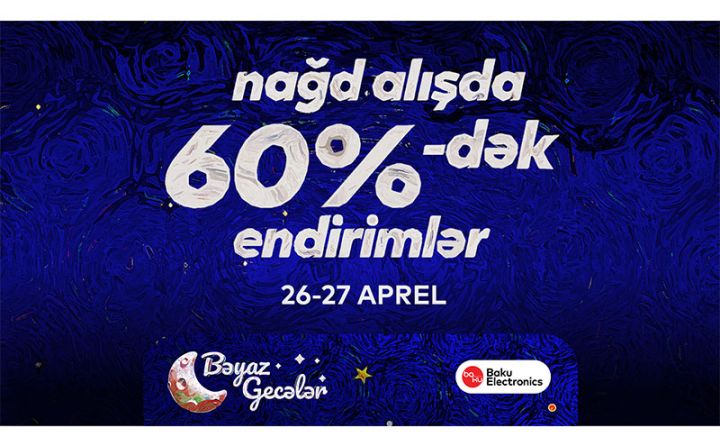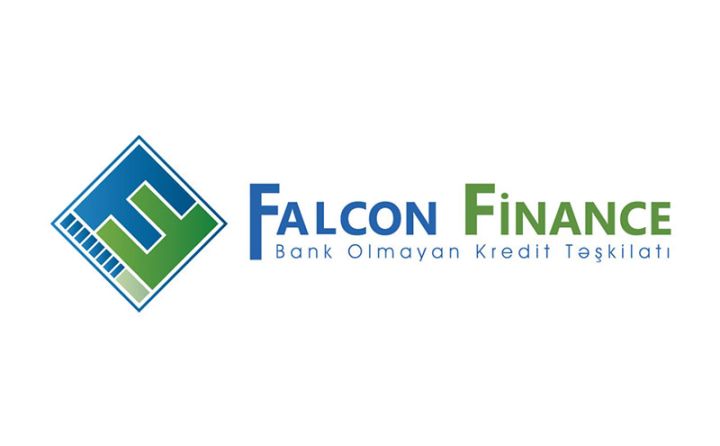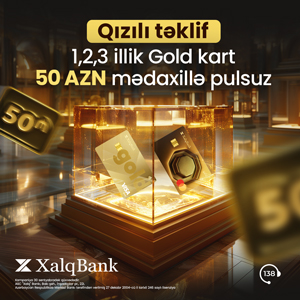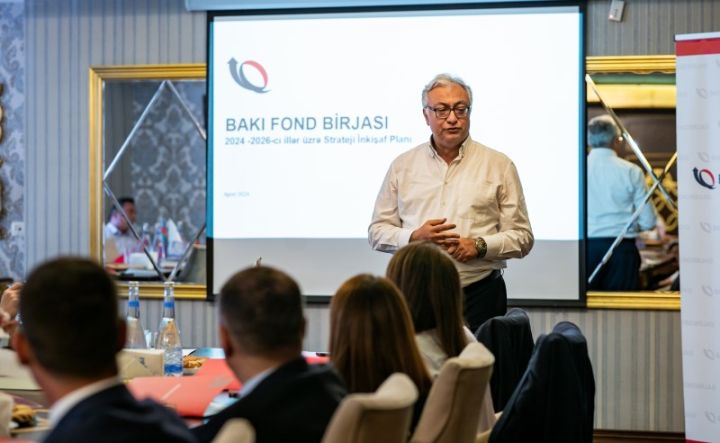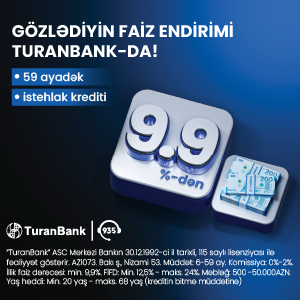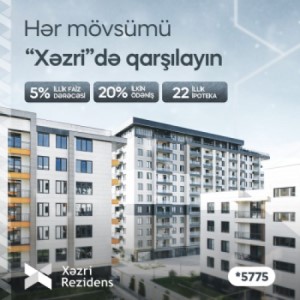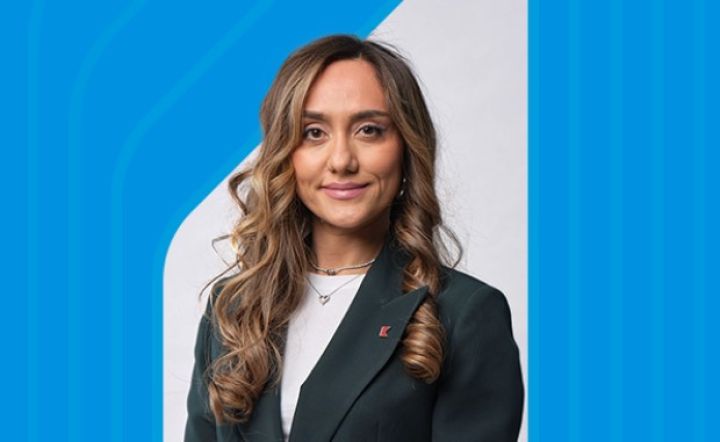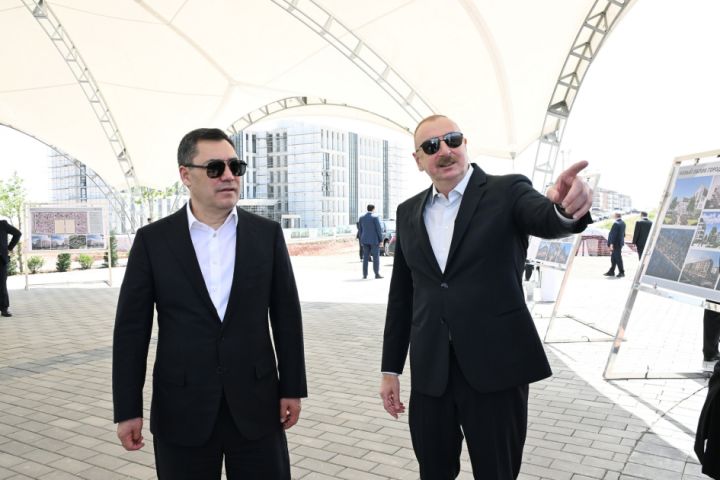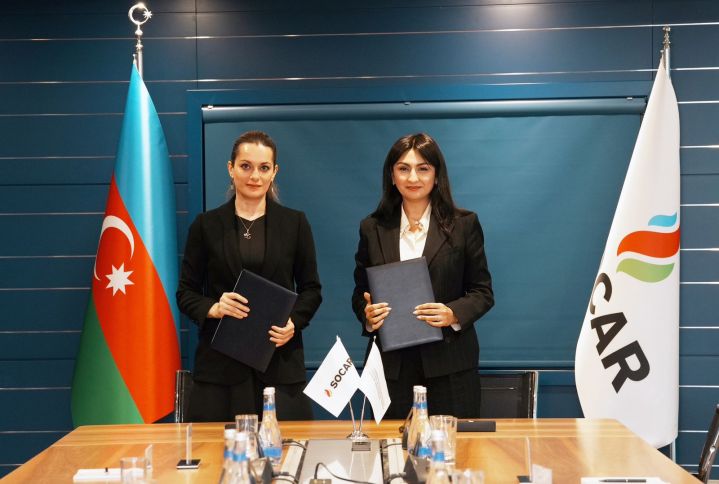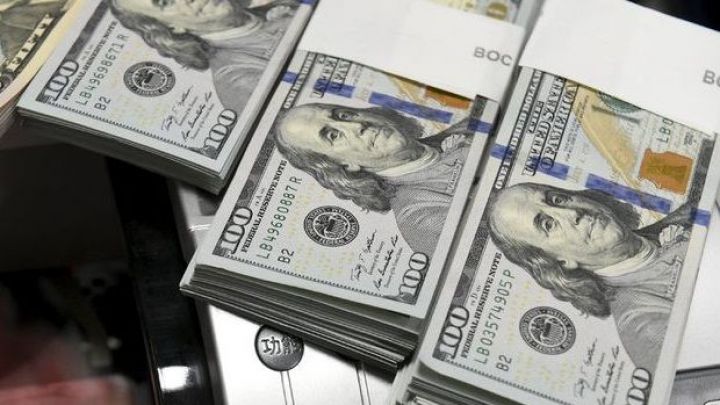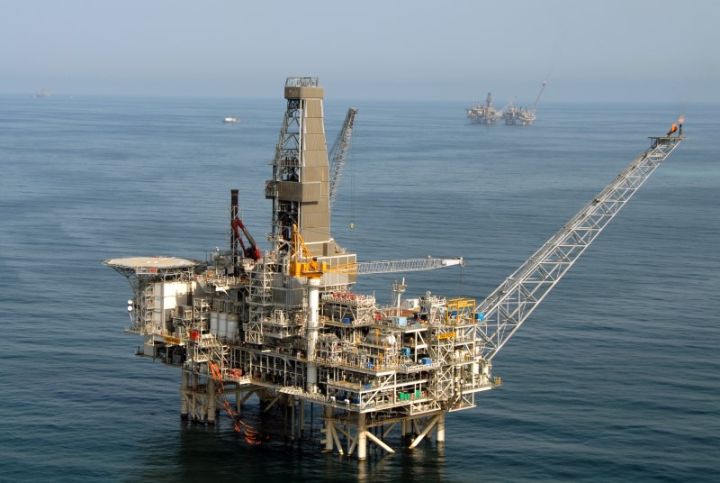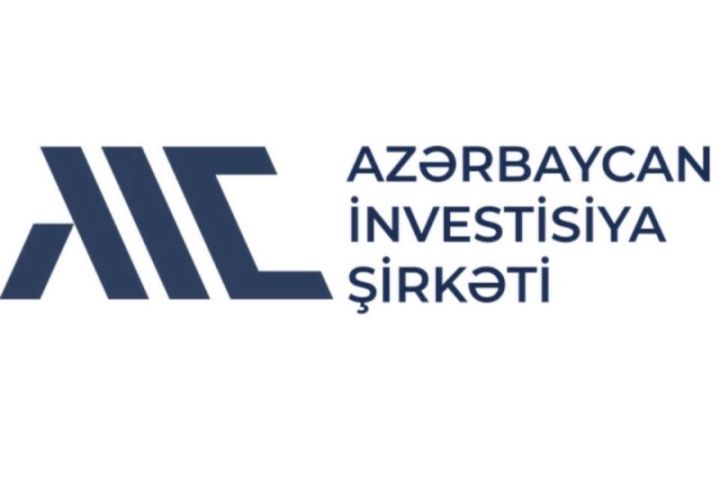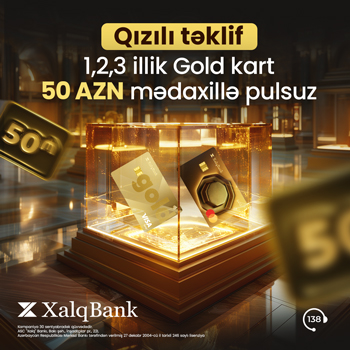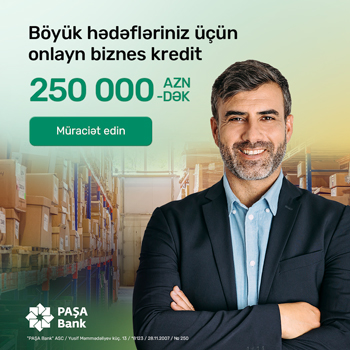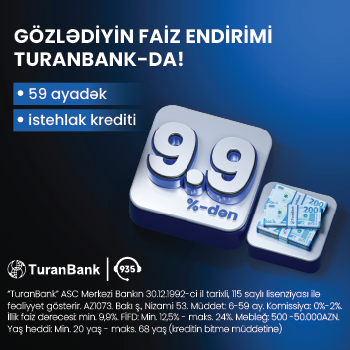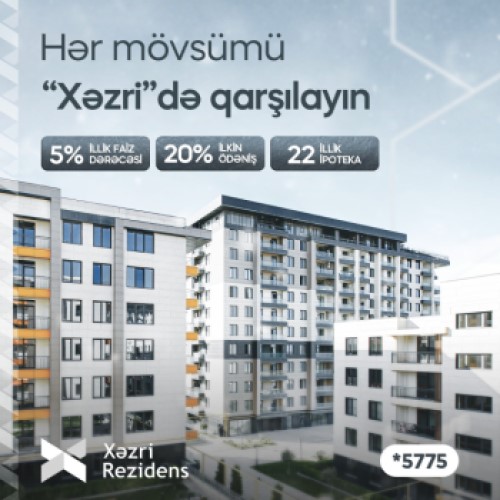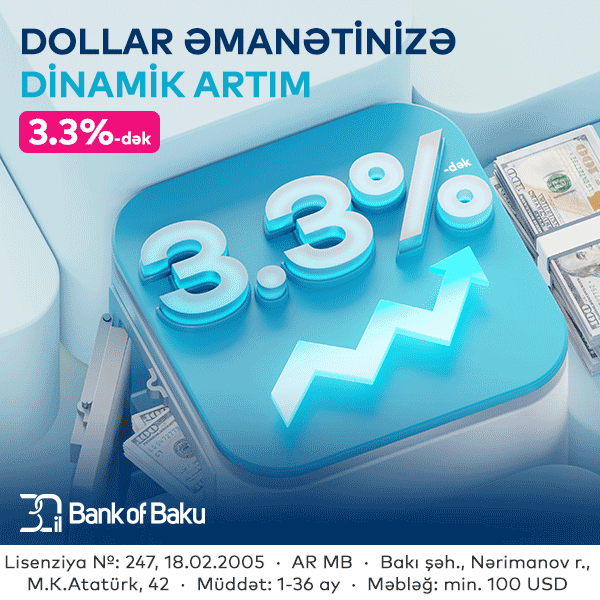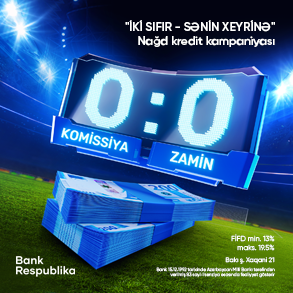SOCAR-ın reytinqi "stabil"ə qalxdı
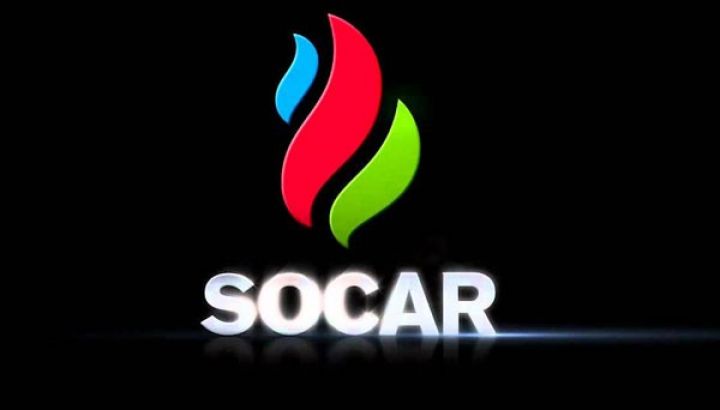
Beynəlxalq kredit reytinqi agentliyi "Fitch Ratings", Azərbaycan Respublikası Dövlət Neft Şirkətinin (SOCAR) kredit reytinqini "BB+" səviyyəsində təsdiq edib, reytinqin proqnozunu isə "neqativ"dən "stabil"ə qaldırıb.
"Marja" xəbər verir ki, "Fitch Ratings"in açıqlamasında, iri layihələr və STAR neftayırma zavodu layihəsinin 2018-də tamamlanması ilə, ötən il 4,3 milyard Azərbaycan manatı olan şirkətin kapital xərclərinin, 2019-2020 dövründə 2 milyard Azərbaycan manatına enməsinin gözlənildiyi qeyd edilib.
Kapital xərclərində gözlənilən azalmanın, şirkətin "BB+" olan kredit reytinqinin təsdiq edilərək "neqativ" izləmədən çıxarılmasına səbəb olduğu bildirilib.
Bildirilir ki, SOCAR-ın reytinqləri Azərbaycanın suveren reytinqinə müvafiqdir.
Fitch Affirms SOCAR at 'BB+', off Watch Negative
Fitch Ratings has affirmed State Oil Company of the Azerbaijan Republic's (SOCAR) Long-Term Issuer Default Rating (IDR) at 'BB+', Short-Term IDR at 'B' and senior unsecured rating at 'BB+'. All ratings have been removed from Rating Watch Negative (RWN). The Outlook is Stable. SOCAR's rating is aligned with the rating of Azerbaijan (BB+/Stable).
SOCAR was among the companies Fitch placed on Rating Watch in November 2017 when the exposure draft of its new Government-Related Entities (GRE) Rating Criteria was published. At the time, Azerbaijan's 'BB+' rating was on Negative Outlook and we were reassessing the standalone credit profile (SCP) of SOCAR. We had previously aligned SOCAR's rating with Azerbaijan's but under the proposed methodology, SOCAR's rating could have been assigned using a top-down approach if its SCP was more than three notches below the sovereign rating and the credit standing of Azerbaijan deteriorated further.
In line with the final GRE rating criteria we have decided to continue to align SOCAR's rating with that of Azerbaijan (now on Stable Outlook) based on SOCAR's SCP being commensurate with a 'B+' rating and the strength of the support from the state mapping to scores between 35 and 42.5.
KEY RATING DRIVERS
Elevated Leverage: Lower oil prices, high capex and trading business expansion led to negative free cash flow (FCF) and a gradual increase in SOCAR's forecasted 2017 funds from operations (FFO) adjusted net leverage to 5.5x from 1.8x in 2013. Following the completion of large pipeline projects and the STAR refinery in 2018, we expect the company's capex to decrease to around AZN2 billion in 2019-2020 from AZN4.3 billion in 2017. Under Fitch oil price assumptions, SOCAR's net leverage will remain above 5.0x until 2020, which continues to constrain SOCAR's SCP.
Stand-alone credit profile of 'B+': While we view the company's business profile as commensurate with a 'BB' rating category, its high leverage results in the overall SCP being in the 'B+' rating category. We expect that capex will remain high until 2018 when large pipeline projects and the STAR refinery in Turkey are completed. Further build-up of gross debt should, however, be limited owing to higher oil prices and expected increase in government subsidies to AZN1.9 billion in 2018 (AZN0.5 billion in 2017).
Funding of SOCAR's Projects: Southern Gas Corridor CJSC (SGC), a JV between SOCAR (49%) and the Ministry of Economy of Azerbaijan (51%), continues the construction of key Azeri gas projects, including the full-field development of the Shah Deniz (SD) gas and condensate field, the expansion of the South Caucasus Pipeline, and the construction of Trans-Anatolian and Trans Adriatic gas pipelines (TANAP and TAP). SOCAR estimates the total spending required to complete the projects at USD2.7 billion as of February 2018 and expects its share of overall funding to come below its 49% stake owing to financing raised by SGC internally (bonds issued to SOFAZ) and externally. In the absence of details on SGC's planned funding structure, Fitch has conservatively assumed that SOCAR fully covers the 49% of the expected capex on its balance sheet.
ACG Extension Positive: In September 2017, the Azerbaijan government, SOCAR and international oil companies signed a contract to extend the production-sharing agreement (PSA) for the Azeri-Chirag-Gunashli (ACG) field until 2049. ACG is the main oil field in Azerbaijan, accounting for 76% of total Azeri oil output in 2016. We view the deal extension as positive for Azerbaijan and SOCAR. The company sells the government's share of crude oil (profit oil) received under PSAs on behalf of the state and transfers the respective funds to the State Oil Fund of Azerbaijan (SOFAZ). The fund then pays grants to the government, SOCAR and other state-related entities underlining the strength of ties between SOCAR and the state.
Progress on STAR Refinery: Total construction costs of the STAR Refinery in Turkey have increased to USD6.3 billion from USD5.7 billion estimated in May 2014 when SOCAR agreed funding for the 10 million tpa oil refinery in Turkey. The USD3.3 billion project finance debt package raised in 2015 for the construction is in two tranches with maturities of 18 and 15 years and a four-year grace period. The refinery is expected to come on stream in 2018 and supply the Turkish market, mainly with diesel and jet fuel. While effective ownership remains with SOCAR, its subsidiary Petkim Petrokimya Holding A.S. (B/Stable) signed an agreement to acquire an 18% stake in the refinery in 2018 for an estimated USD720 million. We expect these funds to be used by SOCAR Turkey, which owns a controlling stake in Petkim, to finance the purchase of a fuel retail network.
Larger Trading Operations: In 2017 SOCAR continued to expand its trading operations with daily oil trading volumes of 2.1 mbpd in 1H17, up from around 1 mbpd in 2016, with the growth due to a surge in third-party supplies of crude and petroleum products. We see an expansion of trading activities as negative for the credit profile - albeit positive for profitability historically - as the trading business requires access to short-term financing, puts pressure on liquidity and may lead to negative working capital outflows in an environment of higher oil prices or growing volumes. While SOCAR recorded working capital inflows in 6M17, we conservatively assume outflows in 2017-2019 due to the projected further increase in trading volumes.
Adjustments to Debt: We treat liabilities resulting from the transactions involving disposal of assets to SGC and Goldman Sachs International (GSI) in the total amount of AZN5.7 billion as debt.
In July 2014 SOCAR signed an agreement to sell a 10% interest in the Shah Deniz PSA and in South Caucasus Pipeline Company (SCPC) to SGC. According to the terms of this agreement, SGC will pay advances for these acquisitions to SOCAR while control will pass to SGC in 2023 upon meeting conditions preceding sales. Advances receivable totalled AZN3 billion at end-June 2017.
In August 2015, SOCAR sold a 13% stake in SOCAR Turkey Enerji A.S. (STEAS) to GSI for AZN1.4 billion (USD1.3 billion). At the same time, SOCAR entered into a put option agreement with GSI, pursuant to which SOCAR committed to purchase back the shares held by GSI, at a specified price if the planned initial public offering of STEAS does not occur, or to settle the put option if certain conditions provided by the put option agreement are not met. The put option is valid until 2021.
DERIVATION SUMMARY
We align SOCAR's rating with that of Azerbaijan (BB+/Stable) under Fitch's new GRE Rating Criteria to reflect strong ties between the company and its parent and strong incentive by the state to support. The company is 100% state- owned, accounts for around 20% of Azerbaijan's oil production, is the largest employer in the country, and a significant contributor to the state budget. The state guarantees debt of the company to an outstanding amount of USD703 million and has extended USD528 million of loans to SOCAR via the Ministry of Finance with the intention of converting the exposure to equity. Additionally, the strategic and operational ties are strong and the company is responsible for the realisation of the government's strategy in the oil and gas sector. SOCAR's taxes accounted for 6.9% of government revenue in 2016, while income from profit oil SOCAR provides to SOFAZ accounted for 49% government revenue.
KEY ASSUMPTIONS
Fitch's Key Assumptions within Our Rating Case for the Issuer
-Brent crude price of USD52.5/bbl in 2018, USD55/bbl in 2019 and USD57.5/bbl thereafter
-USD/AZN exchange rate constant at 1.7 over 2017 - 2020
-Aggregate capex of AZN11 billion over 2017 - 2020
-Equity contribution from the government of AZN0.5 billion in 2017 and AZN1.9 billion in 2018
-Distributions to the government of AZN0.3 billion over 2017- 2020
RATING SENSITIVITIES
SOCAR
Developments That May, Individually or Collectively, Lead to Positive Rating Action
-Positive rating action on the Azerbaijan Republic
Developments That May, Individually or Collectively, Lead to Negative Rating Action
-Negative rating action on the Azerbaijan Republic
-Weakening state support
-Sustained deterioration in SOCAR's credit metrics, with FFO net adjusted leverage exceeding 6.0x over an extended period of time
Azerbaijan
The main factors that could, individually or collectively, trigger negative rating action are:
- An erosion of the sovereign's net external assets
- Developments in the economic policy framework that undermine macroeconomic stability
- Weakening growth performance and prospects
The main factors that could, individually or collectively, trigger positive rating action are:
- Improvement in the macroeconomic policy framework, strengthening the country's ability to address external shocks and reducing macro volatility
- An improvement in governance and the business environment and progress in economic diversification underpinning growth prospects
- A significant rise in the sovereign's net external assets
LIQUIDITY
Weak Liquidity: As of 30 June 2017 cash and cash equivalents of AZN4.5 billion did not cover short-term debt and SOCAR's current portion of long-term borrowing of AZN5.8 billion. The bulk of the short-term debt is in US dollars and is related to SOCAR's trading arm. We expect liquidity to remain weak over 2018 and 2019 as a result of the need to roll over trading-related short-term facilities and upcoming debt amortisations of over AZN1 billion each in 2018 and 2019. With negative FCF forecast under our base case in 2017-2018 as a result of large capex outflows, the liquidity gap is expected to be funded by government equity injections.
Müştərilərin xəbərləri
SON XƏBƏRLƏR
-
24 d. əvvəl
Bakı Fond Birjası “2024-2026-cı illər üzrə Strateji İnkişaf Planı”nı təqdim etdi
- 40 d. əvvəl
-
55 d. əvvəl
SOCAR və “Qazprom”un prezidentləri qaz sahəsində əməkdaşlığı müzakirə edib
-

-
58 d. əvvəl
“Rox Motor” avtomobil brendi artıq rəsmi olaraq Azərbaycanda!
-
1 saat əvvəl
Sahəsi 2 hektar olan qum-çınqıl yatağı cəmi 14 min manata şirkətin istifadəsinə verildi
- 1 saat əvvəl
- 1 saat əvvəl
- 1 saat əvvəl
-
2 saat əvvəl
"Əlavə sərmayə qoyuruq ki, Avropa ölkələrini qaz təchizatı məsələsində dəstəkləyək"
-
2 saat əvvəl
bp şirkəti Dərinsulu Günəşli platformasında hasilatı müvəqqəti dayandırır
- 2 saat əvvəl
- 2 saat əvvəl
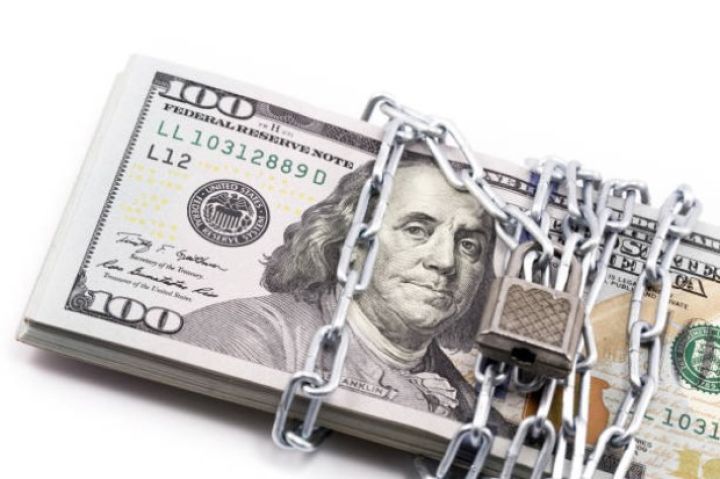
Bazar ertəsinin rəsmi məzənnəsi müəyyən olunub

“Rox Motor” avtomobil brendi artıq rəsmi olaraq Azərbaycanda!

MG MOTORS AZƏRBAYCAN-dan “XÜSUSİ QİYMƏT” kampaniyası
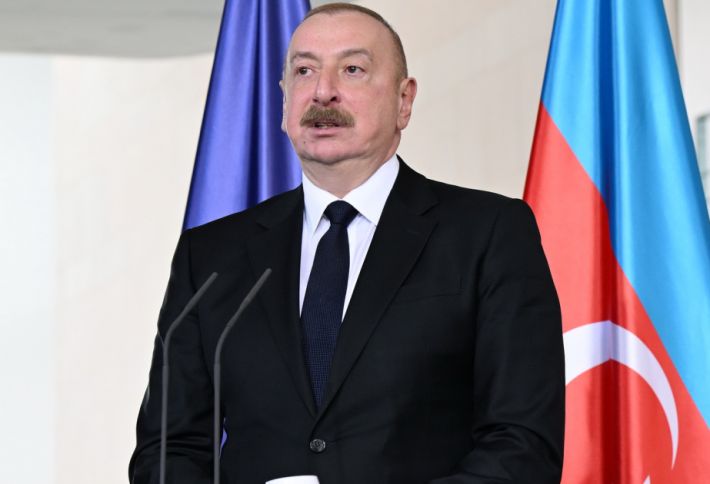
“Növbəti görüş Qazaxıstanda planlaşdırılacaq və beləliklə, sülh sazişinin imzalanmasına doğru biz əlavə addımlar atırıq”

"Əlavə sərmayə qoyuruq ki, Avropa ölkələrini qaz təchizatı məsələsində dəstəkləyək"
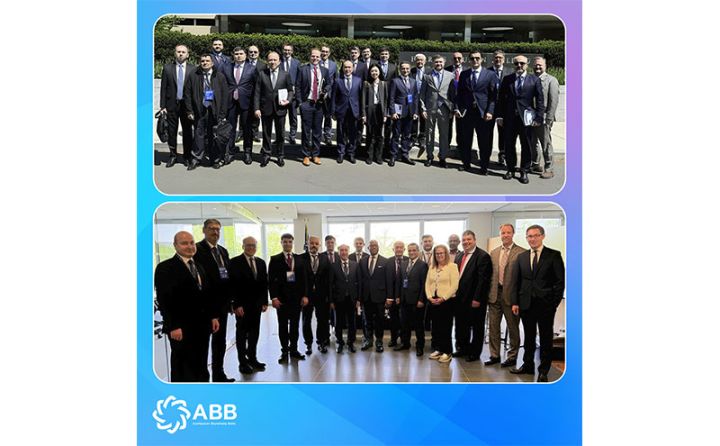
ABB ABŞ-yə ilk bankçılıq missiyasında iştirak etdi
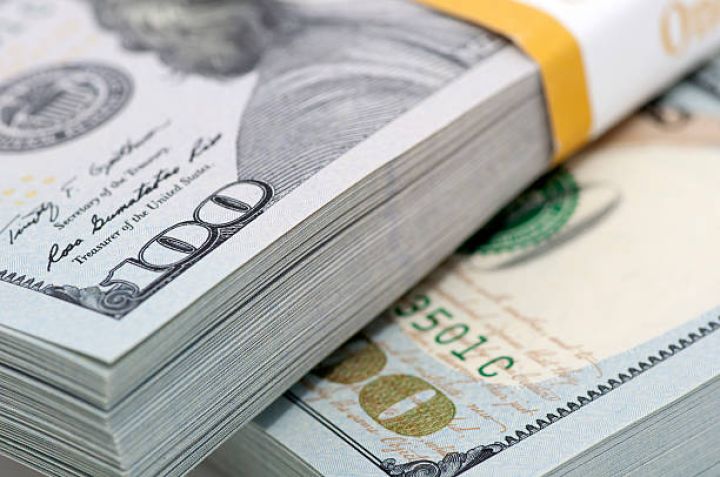
Bu layihələrin icrası ilə 1.6 milyard dollar investisiyanın cəlb edilməsi və 2000-ə yaxın iş yerinin yaradılması nəzərdə tutulur
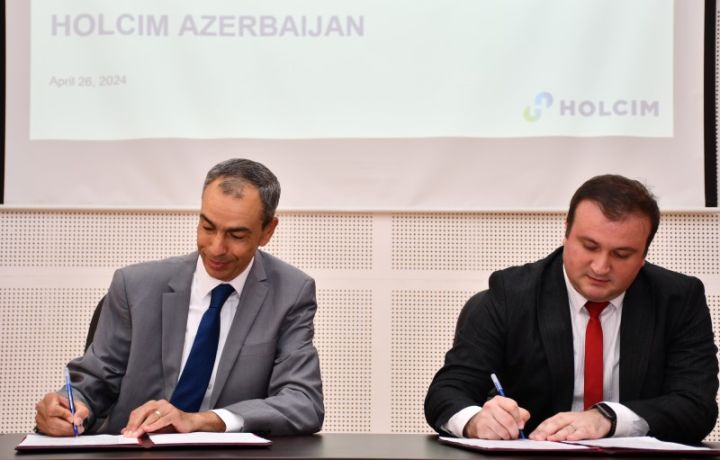
Azərbaycanda ilk dəfə olaraq "Usta Mənəm!" müsabiqəsi keçiriləcək

Misin qiyməti 10 min dollara yüksəlib

Dünya Bankı buğdanın qiyməti ilə bağlı proqnozunu yeniləyib
